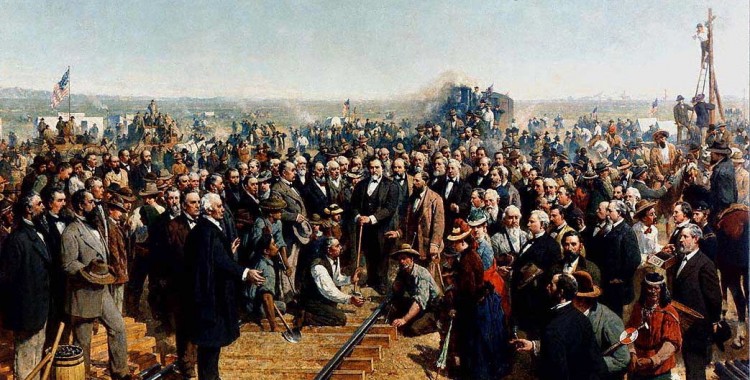
On the History of Capitalism
January 15, 2016
by Diana Greenwald | Filed in: Conferences
From January 3rd to 5th, 2016 thousands of social scientists descended on San Francisco for the American Economic Association annual meetings.
Unfortunately, a discussion of the economics of art was not featured on the program. However, several sessions presented novel methods, research questions, and analyses that can be applied to the study of the economics of the arts. This and the following two posts will each present a topic discussed in one of the conference sessions and how that topic applies to the study of art and economics.
The Cliometric Society sponsored a session called “New Wine in Old Bottles: Capitalism, Monetary Policy, Panics, and War.” The diverse session featured some well-known economic historians—like Alex Field and Claude Diebolt. The most relevant part of the session for those interested in art and economics was not, in fact, one of the papers but one of the discussant’s responses. Economist Robert Margo used his response to talk about the failings of a new trend in history scholarship: the “history of capitalism.”
The study of capitalism is in vogue with history departments, as this 2013 article from the New York Times reports. Spearheaded by Prof. Sven Beckert and encouraged by a program he leads at Harvard; this emerging field aims to understand the links between economics and politics and how the transition to a capitalistic society brought about historical change. It uses qualitative sources, not quantitative ones. In this way, it is wholly distinct from traditional economic history, which relies heavily on cliometrics.
According to Margo’s response, the history of capitalism is a trend to be avoided, and the decision to reject quantification is a poor one. Margo made some strong arguments about how these historians’ lack of economic knowledge and quantitative ability leads them mistakes like misunderstanding the composition of the economy and attributing causation without sufficient evidence. It is confusing why the new historians of capitalism would totally reject the contributions and strategies of traditional economic history—in some ways these scholars are attempting to reinvent the wheel.
Nonetheless, the history of capitalism can contribute to the study of art and economics. The clearest contribution is its biographical studies of the wealthy men and women who controlled vast amounts of financial resources throughout history—and many of these men and women spent these resources on art. The historians of capitalism provide useful qualitative source material about the opinions, habits, and preferences of the class of people who constitute the core consumers of art. A good example of this contribution is Beckert’s book The Monied Metropolis (2003), whose subjects include many of the founders of New York’s art institutions. So, while the history of capitalism and economic history are apparently incompatible, this new subfield may advance the study of art and economics.
Lifecycle of Inventors, Lifecycle of (Female) Artists >>
<< Cultural Economics Workshop: Community
